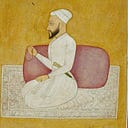In 711 AD the newly minted governor of Tangier, Tariq Ibn Zayid, crossed the Strait of Gibraltar. Behind him lay Morocco, a recent addition to the ever expanding Umayyad Caliphate, while in front stood the Visigoth Kingdom of Iberia. Despite fielding only a modest Berber cavalry Tariq would deal a crushing defeat to the Visigoth army, and in doing so, usher in nearly 800 years of Muslim rule in Iberia.
While the peak of the Cordoba Caliphate would inspire intrigue across both the European and Muslim landscape, it was not to last, as infighting would see the region shatter into various small Muslim fiefdoms. Shortly after, a motley crew of North Iberian, French, and German soldiers would open up a successful front for the Crusades in Iberia, and by the late 13th century, only the coastal kingdom of Grenada remained under Muslim control. By 1492 Grenada was conquered, and Muslim rule extinguished in Iberia.
Before its demise Cordoba was roughly 70% Muslim, the majority of whom were descended from native Iberians, while the Arab and Berber minority served as the ruling elite. From 1050–1500 this population was thinned out significantly, both from Muslims fleeing south to safer lands, and the mass migration of Northern Catholics into newly conquered South-Central Iberia.
From 1500-1600 the relatively tolerant attitude that Catholic monarchs had exhibited towards their newly acquired Muslim subjects was replaced with religious zealotry. All Muslims were forcibly converted to Catholicism, and subject to the Inquisition’s full arsenal of horrific abuses to ensure the former’s fidelity. By 1609 however the Kingdom of Spain was forced to admit defeat; most of the Moriscos (former Moors) continued to hold fast to Islam, and no measure, whether gentle or violent, could persuade them to adopt Catholicism. A “Final Solution” of sorts was settled upon by Spain; the complete ethnic cleansing of Iberia’s Muslims. By 1620 nearly the entire Morisco population had either been expelled or killed, ending over 900 years of Islam in the region.
I’ve been curious about the genetic impact of this period for quite some time, with respect to both modern Spaniards and North Africans. Using G25’s database (particularly its ancient Iberian data-set), I believe we can arrive at some useful insights. So starting with North Africa:
- The Berber reference is from Southern Moroccan Berbers. The Middle Eastern reference is from Bedouin Arabs (with some Egyptian for Libyans). The Iberian reference is a combination of pre-Islamic era Iberians, one group from the Northeast (720 AD) and one from the Southeast (537 AD).
- These results are pretty much what I expected. Peak Iberian admixture in Morocco (20%) where most of the expelled Moors/Moriscos ended up, with decreasing levels as you move east away from the region. The Middle Eastern admixture shows the opposite trend (also expected), highest in geographically proximal Libya (54%), lowest in distant Morocco (9%).
- The Moor samples are from southeast Iberia circa 1245. We don’t actually know for sure if they are Moors, but given over 90% of this region was Muslim by 1245, and some of the haplogroups these individuals carry suggest Middle-Eastern origin (J2, E1), I think its a safe assumption.
- Only about 11.7% of the Moorish admixture came from Arabs/Berbers, confirming the overwhelmingly Iberian nature of Al Andalus. Interestingly, the Bedouin Arab signal is much stronger than the Berber signal. This could simply be an artifact, or it could indicate a much larger percentage of the Muslim settlers in Iberia were Arab than previously thought.
- Iberian references are a combination of pre-Islamic Iberian samples described above, as well Spanish Basque, Gaelic, and Southern France averages. The idea here was to avoid using European populations with significant amounts of post-Islamic Middle Eastern/North African (MENA) admixture, which could muddy our results when adding in the Bedouin and Berber references.
- Islamic-era MENA admixture in modern Iberia populations ranges from Leon and Catalonia at the low end (2.1%) to Aragon at the high end (10%).
At first glance the results may seem counter-intuitive; southern regions with the strongest Muslim presence during the Islamic period (Andalusia, Murcia, Valencia) have less MENA admixture than the central regions (Extremadura, La Mancha, Aragon) that were Muslim ruled for much less time. There are a number of reasons this should be expected however:
- Central Iberia spent centuries longer under pre-1500 Catholic rule than the south. As described above, this was a period of relative tolerance for Muslims, and it was not uncommon for the Northern Catholic forces to ally with various central Iberian Muslim elites against kingdoms of both faiths. This atmosphere likely resulted in a degree of natural assimilation for the region’s Muslims, a process largely denied to the southern Iberian Muslim kingdoms that were conquered much later.
- During the 16th century Moors were subject to a mass population transfer from Andalusia to central Iberia, in an attempt to break the community’s resistance to Catholicisation.
- Following the expulsion of Muslims from Spain, those areas impacted the most demographically (south/east Iberia) attracted the greatest amount of new settlers from north/central Iberia.
- This final display attempts to approximate the nature of Iberian admixture in modern Spanish populations. Analysis was restricted to Murcia and Catalonia, as those are the two regions we have pre-Islamic Iberian DNA to use as a reference (southeast and northeast Iberia).
- These results confirm the massive displacement of southern Iberians by the northern Iberians and French. More surprising is the massive turnover parts of the north (Catalonia) also seemed to have endured; indicative perhaps of French influx into the region?
That’s all for now. Its evident that the Islamic period of Iberia has left a significant genetic imprint on both modern Iberians and North Africans. The Moorish admixture illustrates the overwhelmingly Iberian ancestry of Muslims in Al Andalus, while conversely, the southern Spanish samples depict a major population turnover that accompanied Catholic conquest. As always, analysis is not definitive, and more sampling is needed for solid conclusions.
